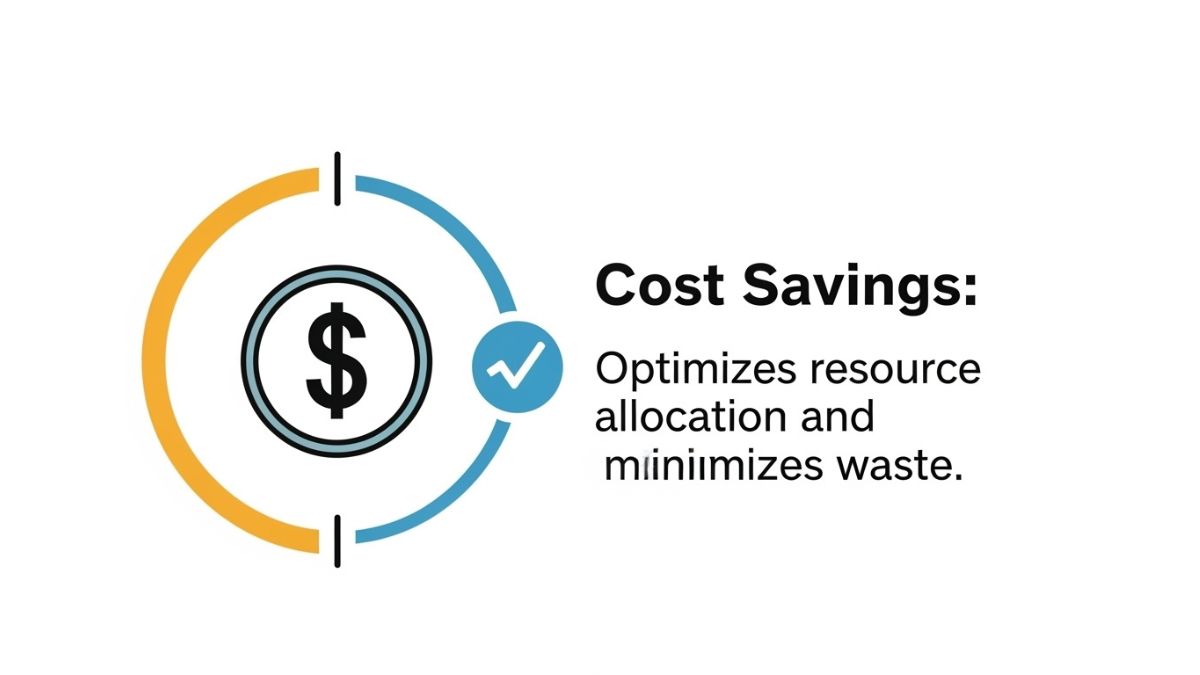As a contractor, working outside the IR35 legislation offers significant tax benefits and greater financial flexibility. However, maintaining compliance with IR35 rules can sometimes be a grey area, especially as the laws continue to evolve. One of the best tools to ensure you’re correctly classified and avoid unnecessary tax liabilities is an outside IR35 calculator.
If you’re a freelancer, contractor, or consultant, understanding how IR35 affects your take-home pay is crucial. The last thing you want is an unexpected tax bill that eats into your earnings. In this guide, we’ll walk you through how an outside IR35 calculator can help you stay compliant, manage your taxes efficiently, and avoid costly mistakes.
What is IR35?
Before diving into the specifics of an outside IR35 calculator, it’s essential to understand IR35 and its significance.
IR35, also known as off-payroll working rules, is a set of tax laws introduced by HMRC (Her Majesty’s Revenue and Customs) in the UK. These rules are designed to identify individuals who are working as ‘disguised employees’ rather than true contractors. In simple terms, if you’re a contractor working for a client but your working conditions are similar to that of a permanent employee, you may be considered ‘inside IR35’, meaning you’ll face higher tax liabilities, including National Insurance and income tax at the employee’s rate.
On the other hand, if you’re outside IR35, it means your contract and working conditions genuinely align with that of a self-employed contractor. This classification allows you to operate with more tax efficiency, taking advantage of lower tax rates, dividends, and other benefits that come with being a true contractor.
The outside IR35 calculator is a tool that helps determine whether your contract qualifies as outside IR35. It evaluates the details of your working arrangement and offers clarity on your tax obligations.
Why is IR35 Classification So Important for Contractors?
IR35 classification is a critical aspect for contractors because it directly impacts how much tax you’ll pay and how you manage your earnings. If you fall under inside IR35, you’ll be taxed like a regular employee. That means your income will be subject to standard PAYE tax rates (Pay As You Earn), which can result in a higher tax burden and reduced take-home pay.
By being classified outside IR35, however, you’ll maintain a more flexible and favourable tax position, allowing you to enjoy the benefits of paying yourself through a combination of salary and dividends.
If you’re working outside IR35, you will generally be able to pay yourself a modest salary (often around the National Insurance threshold) and take the remainder of your income as dividends, which are taxed at a lower rate compared to regular income. This structure can save you a significant amount in tax, making it a preferred option for many contractors.
However, staying outside IR35 requires more than just hope—it requires proper planning and a good understanding of the legislation. This is where an outside IR35 calculator comes into play.
What is an Outside IR35 Calculator?
An outside IR35 calculator is a tool designed to assess whether your contract and working conditions meet the criteria for being classified outside of IR35. It evaluates various factors, such as:
- The nature of your working relationship with the client
- Control over how, when, and where you work
- Whether you have multiple clients or if you work exclusively for one
- The financial risk and liability you take on
- Your right to substitute another person in your role
- The terms and conditions of your contract
By inputting your contract details into a contractor outside IR35 calculator, you get a clearer picture of your IR35 status, helping you make informed decisions about how to manage your taxes.
Using this tool regularly ensures you are compliant with the ever-changing regulations while still maximising your tax efficiency.
How Does an Outside IR35 Calculator Help Contractors?
There are several key benefits to using an outside IR35 calculator when managing your contracts. These tools are designed to give you greater clarity and control over your tax status, ensuring you’re not caught off guard by unexpected liabilities. Here’s a deeper dive into how an outside IR35 calculator can help you stay on top of your tax responsibilities and optimise your contracting experience.
Prevents Unexpected Tax Bills
The last thing any contractor wants is to be hit with an unexpected tax bill after months of hard work. Unfortunately, IR35 issues can arise at any time, and failing to properly assess your status could lead to financial headaches down the line. By regularly using an outside IR35 calculator, you can ensure that your tax status is continually checked and verified.
If the calculator indicates that you’re at risk of being incorrectly classified as inside IR35, you’ll have the opportunity to make the necessary adjustments before HMRC makes a ruling. This could involve renegotiating contract terms, adjusting your working practices, or seeking professional advice to strengthen your position. Ultimately, this early detection prevents costly surprises and ensures you are paying the correct tax.
Ensures Compliance
IR35 rules can be complex and difficult to navigate, especially with the recent changes in the law, such as the responsibility for determining IR35 status shifting to clients for medium and large businesses. Given these changes, many contractors are unsure whether their working arrangements are compliant with current regulations. An outside IR35 calculator is an invaluable tool for contractors looking to stay on top of their compliance obligations.
Using this tool ensures that your contract and working arrangements align with the latest IR35 rules, giving you a clear understanding of your legal position. As a result, you can avoid the stress and uncertainty that often accompany the shifting landscape of IR35 compliance, all while staying aligned with HMRC’s expectations. The outside IR35 calculator serves as an essential safeguard, helping you proactively manage your status without risking non-compliance.
Maximises Take-Home Pay
One of the most significant advantages of being classified outside IR35 is the ability to structure your income in a way that maximises your take-home pay. Contractors outside IR35 can take advantage of a more tax-efficient payment structure by paying themselves a small salary (often just at the National Insurance threshold) and the rest as dividends. This structure results in paying a lower rate of tax compared to the PAYE system used for employees.
Using a calculator outside IR35 helps you determine whether you qualify for this more favourable classification, ensuring that you’re properly taxed at the dividend rate rather than the higher income tax rates. The tool can show you how to structure your salary and dividends for maximum tax efficiency. By maintaining an outside IR35 status, you significantly improve your ability to optimise your earnings.
Provides Peace of Mind
Contracting comes with its share of risks, but one of the major stressors can be worrying about your IR35 status. If you’re constantly second-guessing whether your contract falls inside or outside IR35, it can create unnecessary anxiety and potentially lead to costly mistakes. By using an outside IR35 calculator, you gain clarity on your status.
This tool provides you with a reliable and up-to-date assessment, helping you make well-informed decisions about your contracts and tax structure. Knowing exactly where you stand allows you to focus on your work and your clients without the fear of looming tax complications. The peace of mind that comes with knowing your status is accurate and compliant is invaluable for both your mental well-being and business stability.
Helps With Contract Negotiation
Understanding your IR35 status in advance is an essential part of contract negotiation. If you suspect that a contract may be at risk of being inside IR35, the outside IR35 calculator helps you identify any potential issues early on. This gives you time to address any concerns with your client or agency and negotiate the contract terms accordingly.
For example, if the calculator shows that your contract is likely to be classified as inside IR35, you can discuss potential adjustments with your client. You may ask for a change in the working relationship, such as increasing your control over how, when, or where the work is done, or negotiating for more favourable terms that would make the contract more aligned with an outside IR35 arrangement.
When Should You Use an Outside IR35 Calculator?
It’s important to use an outside IR35 calculator at key stages throughout your contract lifecycle. These tools are beneficial not just when you’re first starting a contract but throughout the term of the contract as well.
- Before Signing a Contract: Before entering any contract, you should run the contract details through an outside IR35 calculator. This will help you ensure that the contract is set up in a way that aligns with IR35 rules, maximising your tax efficiency from day one.
- During Contract Reviews: If your working arrangements change during the contract (for example, if your level of control over your work changes or you begin working in a way that might appear more like an employee), it’s wise to run the calculator outside IR35 again to check if your status has shifted.
- If There Are Changes in Legislation: Tax rules and IR35 legislation can change. For example, responsibility for determining whether a contractor falls inside or outside IR35 has shifted from contractors to clients in recent years. If there are legislative updates, using an outside IR35 calculator can help ensure that you are still compliant.
How to Use an Outside IR35 Calculator?
Using an outside IR35 calculator is generally straightforward, but there are a few important details to consider for an accurate result.
- Input Your Contract Details – Start by entering the relevant contract details into the calculator. These typically include your role, the nature of your relationship with the client, how much control you have over your work, and whether you have the right to substitute someone else to perform the work.
- Assess Your Working Practices – The calculator will evaluate factors like your working hours, location, and whether you are financially at risk for the project. This is important because contracts that resemble full-time employment are more likely to fall inside IR35.
- Review the Outcome – Once the calculation is complete, you’ll receive an assessment of your IR35 status—either inside or outside. If the result is borderline or you feel unsure about the classification, consider seeking further advice from a specialist.
- Make Necessary Adjustments – If the calculator determines your contract is inside IR35, you may want to discuss changes to the terms with your client or agency to ensure it’s aligned with outside IR35 criteria. This could involve renegotiating the level of control you have over the work, or adjusting the terms around substitution rights.
Conclusion: Staying Tax-Compliant and Maximising Your Earnings
Contractors can easily find themselves in a challenging position when it comes to IR35, especially with the potential financial implications of getting it wrong. That’s why using an outside IR35 calculator is an essential tool for ensuring you’re paying the right amount of tax and avoiding surprises.
By using a contractor outside IR35 calculator, you can take the guesswork out of your tax status, ensure you’re in compliance with HMRC rules, and ultimately save money by structuring your payments in the most tax-efficient way possible.
Remember, while the outside IR35 calculator is an invaluable tool, it’s also important to keep abreast of any changes in IR35 legislation, seek expert advice when needed, and negotiate contracts that are clearly outside IR35 to protect your earnings and your business.
With the right planning and the right tools, you can work confidently as a contractor and ensure you’re always on the right side of the tax laws.











